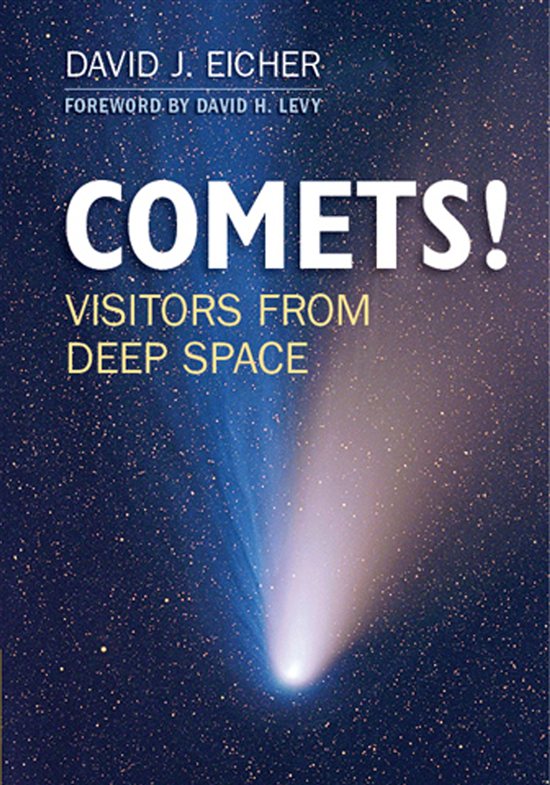 A book excerpt from COMETS! Visitors from Deep Space, by David J. Eicher (Cambridge University Press, New York, 2013) . . .
A book excerpt from COMETS! Visitors from Deep Space, by David J. Eicher (Cambridge University Press, New York, 2013) . . .
A years-long affair with the idea of comets delivering a huge amount of water to Earth seemed built of pure, simple logic. Made largely of water ice, and existing perhaps in the trillions, they were the leading suspects. They also presumably retained their isotopic properties from the earliest days of the solar system. But recent measurements of the deuterium to hydrogen ratio (D/H ratio) of water in eight Oort Cloud comets deliver a heavy blow to this idea. Water can carry different isotopic signatures, depending on the hydrogen isotopes it contains, and the ratios of deuterium (heavy hydrogen) to hydrogen in the comets are on average twice those of the Vienna Standard Mean Ocean Water (VSMOW), which defines the average isotopic water concentration on Earth. Moreover, they are 15 times greater than the D/H ratio of the early solar nebula. Although it’s quite possible the D/H ratio of ocean water could have changed over time, most scientists believe this incompatibility rules out comets as major sources of Earth’s water.
But the arguments over comets providing water to early Earth didn’t stop with the Oort Cloud. In the 1990s, several planetary scientists proposed that perhaps Jupiter-family comets were the source of Earth’s water. These comets have lower D/H ratios because they formed in a warmer region of the solar system. For example, the Jupiter-family Comet 103P/Hartley 2 has nearly the same D/H ratio as Earth’s ocean water. But dynamical arguments stepped in to make the Jupiter-family comets unlikely as sources of water. With Jupiter and Saturn in their current positions, comets that bombarded Earth may have traveled from the region beyond Uranus. But computer modeling of the early solar system shows a “bombardment” of comets from this region likely would have produced only about 6 percent of the water needed to make up Earth’s oceans.
A spate of recent studies support this idea that comets played a relatively minor role in delivering water to early Earth. Several analyses show that comets probably contributed about 10 percent of Earth’s water. But if the dynamics of orbits changed drastically over time, then this answer may be misleading. Support for the hypothesis that lots of water was supplied by comets in studies of isotopic ratios is also weak. Studies of ratios of noble gases suggest comets could not have delivered the majority of water to early Earth unless it happened very quickly, during something like the first 100 million years of the planet’s history — or perhaps if comets came from a region other than the Oort Cloud. These studies, coupled with dynamical simulations, suggest that comets contributed 10 to 15 percent of the water on Earth.
You can see more about COMETS! here.
Follow David J. Eicher on Twitter: www.twitter.com/deicherstar